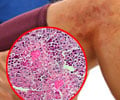University of Rochester researchers can now answer why only half of all prescribed preventive asthma medications are actually taken daily as directed and why so many kids
University of Rochester researchers can now answer why only half of all prescribed preventive asthma medications are actually taken daily as directed and why so many kids needlessly suffer symptoms, as a result of this. Turns out, parents' beliefs about their children's medicines (fear of side effects or dependency, even doubt that the medicines are necessary) influence how consistently they administered the drugs.
“Children today can be virtually symptom-free, thanks to modern preventive medications,” said Kelly Conn, M.P.H., a senior research coordinator at the University of Rochester Medical Center and lead author of the study that published in this month’s Pediatrics. “But kids rely on their parents to make health decisions for them, so we need to know what parents are thinking as we partner with them to achieve this goal.”Only about half of all prescribed preventive asthma medications are actually taken daily as directed.
To see if parents’ beliefs about their children’s medicines might be influencing how dependably they administered the drugs, the Rochester team analyzed data from parents of 622 children in Southeast Michigan who reported use of at least one preventive asthma medication.
First, parents were asked to complete a Beliefs About Medications Questionnaire (BMQ), a survey that measures two often-conflicting realms of parents’ perceptions of their children’s medications – the necessity, or the extent to which they believed a child’s sickness necessitated taking it, versus the concern, or the extent to which a parent worried about possible risks associated with the drugs, such as side effects and potential for dependency.
Not unlike a “cost-benefit” analysis, a differential score was calculated by subtracting the concern score from the necessity score; this served as a weighed appraisal of each parent’s beliefs.
“We knew that parents often hold opposing attitudes on this issue, almost instinctively. It’s only natural to be caught between worrying about possible dangers related to the medicine and worrying the risks posed by the asthma itself,” Conn said.
Advertisement
The remaining 6 percent were equally torn between both beliefs of need and concern. To see how these leanings might impact behavior, parents were also asked to complete the 4-item Medication Adherence Scale, which gauges how strictly they helped kids stick to their assigned prevention regimens.
Still, only 14 percent of parents reported being perfectly adherent to their children’s asthma medicine regimen. “These findings suggest a great deal of promise for improving symptom control just by addressing parents’ worries and providing accurate information about medication side effects,” Conn said.
Conn suggests that pediatricians, pharmacists and other healthcare providers begin integrating little changes, such as taking an extra moment to reiterate that these are preventive, not rescue, medicines; for the best chances at improving symptoms, children should take them consistently, whether they feel symptomatic or not.
When speaking with parents who grew up with asthma themselves (the disease is hereditary, to an extent), healthcare providers should remind them that the advances made in medicines over the last decade can offer today’s kids a symptom-free life, or close to it, with good adherence. Suffering need no longer be part of the schema, Conn said.
Healthcare providers, she suggested, must also make a point to alleviate common parental fears. “Some parents hear or read the word steroid, and at once start worrying about long term effects on their child. This is an opportunity for explanation,” Conn said. “Physicians regard these medicines as quite safe, when used properly; the more parents hear that, the more they understand, the less room there is for anxiety.”
The study also found that parents who were minorities (black or Hispanics, in this study) were significantly less likely to have their perception of their child’s need for medicines outweigh any lingering concerns (68 percent, as opposed to 79 percent of white, non-Hispanic parents).
This is especially concerning, given that minority populations are not only more at risk for asthma morbidity, but are also less likely to receive the preventive medications in the first place, Conn said.
“Clearly, more research is needed to investigate all the sources that shape each parent’s beliefs about asthma medication,” Conn said. “It may be that different ideas may resonate more strongly with different types of parents. Our job is to find the most helpful messages and work to make them stick.
Source-Eurekalert
LIN/C











